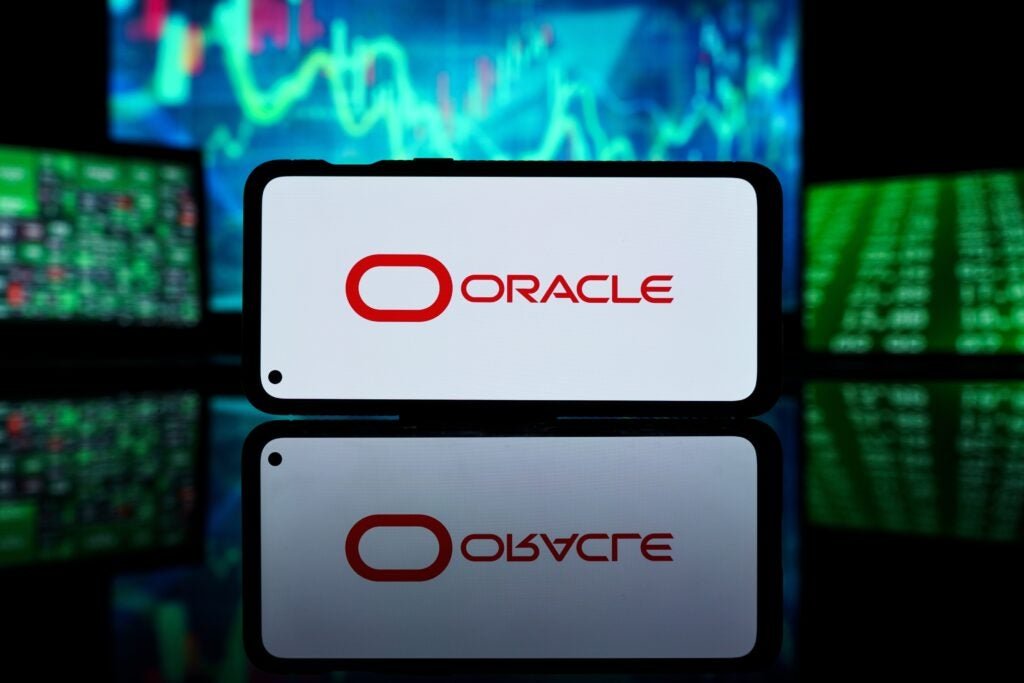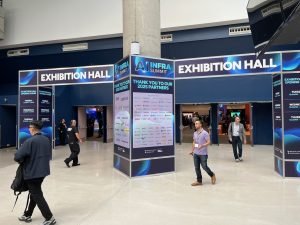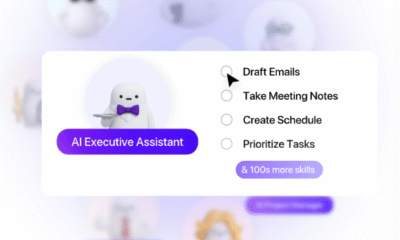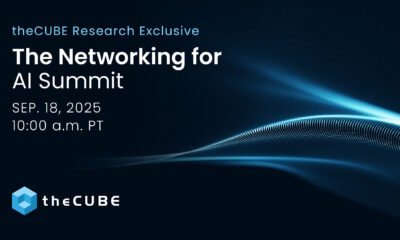Tools & Platforms
Lanai’s edge-based observability agents aim to seek out and shut down shadow AI

AI monitoring startup Lanai Inc. says it’s ready to tackle the growing risk presented by “shadow” artificial intelligence with the launch of its new observability agent, which runs so-called “detection models” directly on corporate devices, instead of routing conversations through centralized cloud infrastructure.
Lanai says its AI Observability Agent is the next step in AI governance, eliminating the risks associated with employees who use unauthorized chatbots and services. It provides full visibility into employee’s generative AI interactions across any application, without sending data outside of an organization’s own network.
The startup believes that “shadow AI” has become an acute crisis for enterprises, citing a study by LayerX Ltd. that shows more than 89% of all enterprise AI usage is completely invisible to information technology and security teams. That’s because employees are doing things such as using personal ChatGPT accounts for work to increase their productivity, while software engineers employ unauthorized tools such as Codeium and Cursor to help write code faster. In addition, many workers blithely feed sensitive information into the AI features embedded in platforms such as Salesforce, Adobe and Microsoft 365, without their supervisors knowing about it.
That’s problematic, according to Lanai co-founder and Chief Executive Lexi Reese, because it means security teams are being asked to secure things that they cannot see. “The shadow AI problem is exploding as employees are using personal accounts, unapproved coding agents and embedded AI features in everyday SaaS tools, and this all sits outside IT’s visibility,” she said. “Traditional tools might catch someone visiting ChatGPT.com, but they have no idea if that employee just shared company trade secrets or a client’s sensitive revenue information.”
Reese said Lanai’s AI Observability Agent embeds lightweight observability models onto every employee’s device to bring this activity out of the shadows and add guardrails to ensure that sensitive information is not being shared with third-party AI, ensuring safety without sacrificing speed or innovation.
Lanai’s observability agents can be integrated with existing data management tools within 24 hours or less, and enable dynamic detection across any application employees use, without the need to create static lists. They carry out prompt and response analysis in real time to ensure no sensitive data or workflow insights are being leaked, with all of the processing done on the employee’s device.
By using Lanai as a source of intelligence into what AI tools people are using, companies can approve the services that are most useful and shut down others to protect vast amounts of data, the startup said.
To demonstrate how effective its platform is, Lanai gave some insights into how early adopters have been able to scale back shadow AI without hurting productivity. For instance, it cites one Fortune 500 tech company, which found that its software engineers were using 12 different coding agents, feeding them volumes of sensitive information on a daily basis. That customer used Lanai’s agents to identify the best performing coding agents and work out which ones were suitable for approval.
Those that met its requirements were then scaled across departments, while unauthorized tools were blocked. The result: Productive AI usage soared by 300%.
Similarly, a healthcare organization found that its more than 20,000 employees were using 34 different AI tools, despite only five being approved. That included doctors feeding patient data into their personal ChatGPT accounts and developers using unauthorized agents to write code for regulated software applications. By implementing automated controls, it saw an 80% reduction in data exposure incidents in just 90 days.
Lanai also points to the example of an unnamed financial services firm, which discovered that 73% of its total AI usage was through personal accounts. It shut down unauthorized usage and identified the best-performing approved AI tools to help the company eliminate $700,000 in annual costs on unnecessary services.
Lanai’s other co-founder Steve Herrod said the company has ambitions to become the “Datadog of AI” by identifying and securing the AI services that bring the most benefits to enterprises, while shutting down the rest.
“We’re moving AI observability from the network to the edge,” he said. “It’s like the shift from monitoring server rooms to having telemetry inside every virtual machine. Whereas traditional approaches see network traffic, we see the actual prompts and responses, which are where the real risks and value live.”
Image: SiliconANGLE/Microsoft Designer
Support our mission to keep content open and free by engaging with theCUBE community. Join theCUBE’s Alumni Trust Network, where technology leaders connect, share intelligence and create opportunities.
- 15M+ viewers of theCUBE videos, powering conversations across AI, cloud, cybersecurity and more
- 11.4k+ theCUBE alumni — Connect with more than 11,400 tech and business leaders shaping the future through a unique trusted-based network.
About SiliconANGLE Media
Founded by tech visionaries John Furrier and Dave Vellante, SiliconANGLE Media has built a dynamic ecosystem of industry-leading digital media brands that reach 15+ million elite tech professionals. Our new proprietary theCUBE AI Video Cloud is breaking ground in audience interaction, leveraging theCUBEai.com neural network to help technology companies make data-driven decisions and stay at the forefront of industry conversations.
Tools & Platforms
AI’s New Cloud King: Oracle’s Rally Could Rewrite ETF Playbooks – ARK Next Generation Internet ETF (BATS:ARKW), Global X Artificial Intelligence & Technology ETF (NASDAQ:AIQ)

Oracle Corp’s ORCL shares soared over 40% on Wednesday, a day after posting its earnings powered by booming demand for AI infrastructure, pushing CEO Larry Ellison ahead of Tesla Inc TSLA scion Elon Musk as the world’s wealthiest individual.
Beyond the headline wealth change, the move has considerable implications for ETFs, showing how AI infrastructure is becoming more integral to broad-market and thematic funds alike.
Oracle’s profits highlighted the company as a prime supplier of data center space and cloud computing for AI use. With an eye-popping $455 billion AI services backlog and multi-billion-dollar contracts such as providing OpenAI with 4.5 gigawatts of energy to power ChatGPT, Oracle made it clear to the world that it is more than a software behemoth now.
Impact On ETFs
For holders of broad-market ETFs, Oracle’s rise comes with an immediate impact on portfolio weightings. Sector-specific ETFs like Technology Select Sector SPDR XLK and Vanguard Information Technology ETF VGT stand to gain, as Oracle moves higher in the ranks of the most heavily weighted tech names. Both funds are up around 1.5% on Wednesday.
Thematic ETFs on AI, cloud, and next-generation technologies are also being rewired. If Oracle crosses $1 trillion in valuation, it joins a very exclusive group. That milestone might spark reappraisals by active managers and ETF issuers alike, potentially creating new “AI infrastructure” baskets or raising its inclusion in existing thematic funds.
Others like Global X Cloud Computing ETF CLOU, WisdomTree Artificial Intelligence & Innovation Fund WTAI, and ARK Next Generation Internet ETF ARKW might have to change exposure to reflect Oracle’s new leadership in AI infrastructure.
The ripple effects even extend to ETFs with broader innovation themes. For example, both iShares Exponential Technologies ETF XT or Global X Artificial Intelligence & Technology ETF AIQ track companies positioned to benefit from AI adoption.
Oracle’s repositioning as a critical AI infrastructure player makes it harder for ETF managers to overlook.
The Bigger Picture For ETF Investors
Investors seeking to capitalize on the AI boom have several options for gaining diversified exposure to the companies driving this growth, rather than betting on individual stocks.
This episode shows a larger trend: AI-fueled growth is no longer the exclusive domain of mainstream software or chip stocks. ETFs are keeping pace with the industry, providing investors with vehicles to harness both broad-market tech appreciation and thematic exposures in AI, cloud, and enterprise infrastructure.
Oracle’s explosive growth shows how the fortunes of a single company can cascade through dozens of ETFs, affecting flows, weightings, and sector performance.
Read Next:
Image: Shutterstock
Tools & Platforms
Sevierville to use new AI pavement management technology for street maintenance

SEVIERVILLE, Tenn. (WVLT) – Sevierville will begin using new pavement technology for its pavement and infrastructure.
The city said the new technology will provide vibration and camera data and will be able to automatically report street and driving conditions to the city.
“The comprehensive data helps tailor future paving plans to ensure the most efficient use of funds, and custom work orders can be readily created based on the condition data, making pavement preservation and repair more manageable and ensuring the most efficient use of tax dollars,” said the City of Sevierville in a press release.
The city said this will allow them to assess the conditions of their current roadways and be able to use AI technology to make suggestions for how to best treat the pavement.
The new technology will come from Roadway Management Technologies (RMT) a company offering performance tracking solutions.
Copyright 2025 WVLT. All rights reserved.
Tools & Platforms
Is The Tech Market Going Nuts? – JOSH BERSIN

Today we learned that OpenAI just signed a five-year deal with Oracle to spend $300 Billion on data centers (this is five-times Oracle’s annual revenues today), more or less doubling Oracle’s annualized revenue in one transaction. Oracle’s stock went up about 35% or more.
This $300 billion deal can now be added to more than $450 billion cited by Meta, Amazon, Microsoft, and Google to total almost $750 billion allocated this year toward AI infrastructure alone. If you add the cost of engineering talent and energy to be built, it’s probably more like $800 billion. (Meta’s new Louisiana data center is the size of Manhattan.)
If you consider that US GDP is around $30.3 trillion (expected to grow at 1.7% per year), this means that almost 2.5-3% of our entire US GDP has been allocated to AI infrastructure this year.
I’m not sure if we’ve ever committed so much capital to one activity in one year since the Apollo Space Program in 1964. Even the Manhattan Project, which developed the Atomic Bomb to end World War 2, was only about .4% of GDP.
I’m not saying this is too much money, since these are private companies committing funds from their shareholders. But the bet these companies are taking is that somehow, over the coming decades, some multiple of 2.5% of GDP is going to come back as revenue to providers around the business of AI.
This next week is the big HR Technology Conference in Vegas, and I”m going to be keynoting on Thursday to give you an overview of the space. It’s quite astounding how quickly we went from “What is AI?” to “Let’s implement AI as fast as we can” in virtually every company I talk with.
Just a few of the things going on to talk about next week.
- Workday announced the acquisition of Paradox, cementing their move into high-volume recruiting. This complements the company’s acquisition of Hiredscore, and further increases Workday’s AI bench of talent. At the same time the class-action lawsuit (Mobley vs. Workday) is moving ahead, threatening the company with some kind of major settlement for AI-induced age discrimination in hiring.
- ServiceNow, the most “AI centric” of the big vendors, announced its Zurich release, which includes new dev tools for IT departments (and users), more features for data management and security, and Agentic Playbooks to help companies understand how to build human to AI workflows.
- WorkHuman, the billion dollar employee recognition company, introduced its Human Intelligence system, which gives companies highly reliable skills and capability inferences across the workforce, based on peer to peer recognition and feedback,
- Eightfold introduced its end-to-end toolset for high-volume recruiting, including an AI-interviewer (infinite scale for high volume job openings), Candidate Concierge (candidate chat), and new workflows for its talent intelligence and applicant tracking system,
- SAP SuccessFactors announced the acquisition of SmartRecruiters, and you can expect to see more about SAP and our Galileo at SAP Connect in October,
- UKG has announced and is now delivering a wide array of AI agents for its massive customer base of front-line worker companies. These agents help with shift scheduling, real-time pay, payroll reconciliation, shift sharing, and all sorts of important but complex scheduling issues faced by the 70% of workers who work in retail, hospitality, healthcare, transportation, entertainment, and other front-line positions.
- OpenAI announced its Jobs platform and strategy to develop and certify AI skills.
- Many dozens of new companies have been announcing new agentic features including Microsoft, Arist, Cornerstone, ADP, Lightcast, Draup, SHL, Techwolf, Visier, Beamery, Gloat, Reejig, Deel, HiBob, and many others.
- We will be announcing a major new set of features in Galileo, and also highlighting that we have more than 600 companies now using our intelligent Agent for HR.
Where is all this going?
As you’ll hear about next week, Agentic AI in HR is here now, and this means our HR organizations are going to get smarter, more integrated, and probably smaller. The tradition ratio of 100:1 employee to HR ratio could go up to 150-200 over the next few years, and that means HR professionals will become Superworkers, with even more opportunity to add value.
The big HCM vendors (SAP, Workday, Oracle, ADP, Dayforce, UKG) are all heavily investing in AI now, and they’ve hired and developed strong AI teams internally. Each is focused in different areas, so most of you will start to see many AI options from your core providers. In the complex areas like talent acquisition, L&D, and employee experience.
Several things I hope to share next week. First, I’ll try to give you an overall sense of how to manage this proliferation of new tools, and share what we’ve learned about AI transformation process and governance. Second, I’ll share what we’ve been learning about in job redesign and task analysis, an important enterprise discipline in large AI transformations. And third, I’ll be showing you more about the culture and leadership changes we can expect that will help our companies transform more effectively.
I’d say there’s a lot of fast-moving activity taking place (witness Salesforce’s layoff of 4,000 people last week), but for many of you this is a new career in rethinking jobs, organization structure, and skills development as we all move to become what we call Superworker companies.
There will be many announcements and I’ll cover as many as I can, but just strap yourself in. When the technology industry invests almost 3% of US GDP in AI, we are all going to be flooded with tools, systems, and new toys to play with.
Additional Information
Galileo Learn™ – Get Ahead. Stay Ahead. A Revolutionary Approach To Corporate Learning
Can AI Beat Human Intuition For Complex Decision-Making? I Think Not.
The Road To AI-Driven Productivity: Four Stages of Transformation
-

 Business2 weeks ago
Business2 weeks agoThe Guardian view on Trump and the Fed: independence is no substitute for accountability | Editorial
-
Tools & Platforms4 weeks ago
Building Trust in Military AI Starts with Opening the Black Box – War on the Rocks
-

 Ethics & Policy2 months ago
Ethics & Policy2 months agoSDAIA Supports Saudi Arabia’s Leadership in Shaping Global AI Ethics, Policy, and Research – وكالة الأنباء السعودية
-

 Events & Conferences4 months ago
Events & Conferences4 months agoJourney to 1000 models: Scaling Instagram’s recommendation system
-

 Jobs & Careers2 months ago
Jobs & Careers2 months agoMumbai-based Perplexity Alternative Has 60k+ Users Without Funding
-

 Education2 months ago
Education2 months agoVEX Robotics launches AI-powered classroom robotics system
-

 Podcasts & Talks2 months ago
Podcasts & Talks2 months agoHappy 4th of July! 🎆 Made with Veo 3 in Gemini
-

 Education2 months ago
Education2 months agoMacron says UK and France have duty to tackle illegal migration ‘with humanity, solidarity and firmness’ – UK politics live | Politics
-

 Funding & Business2 months ago
Funding & Business2 months agoKayak and Expedia race to build AI travel agents that turn social posts into itineraries
-

 Podcasts & Talks2 months ago
Podcasts & Talks2 months agoOpenAI 🤝 @teamganassi





















